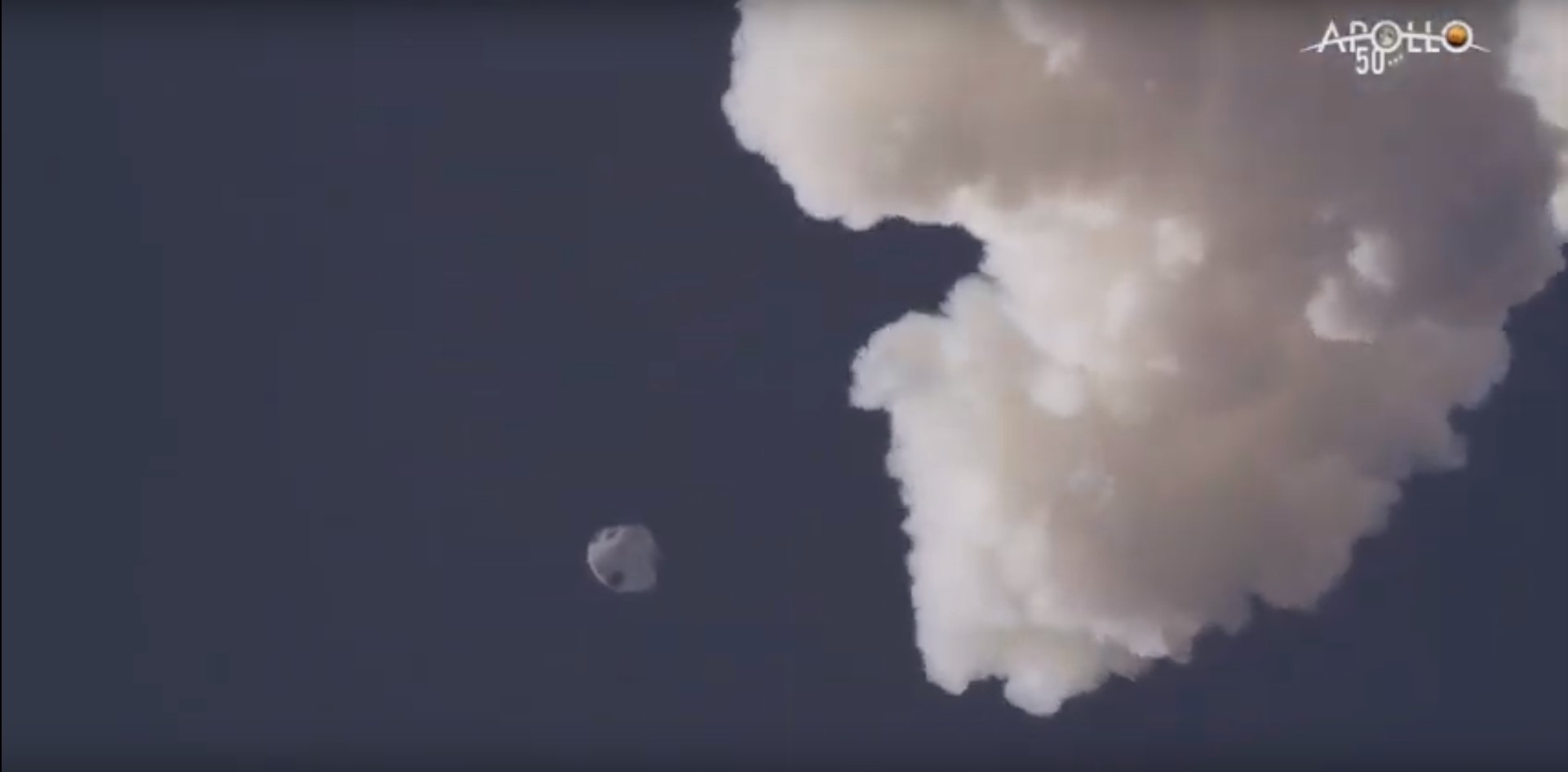After Own Failed Rocket Launch, Astronaut Gives Orion Safety Test Thumbs Up
Nick Hague knows a thing or two about launch aborts.

For astronauts strapping themselves on top of a rocket, good safety systems aren't just nice to have — they can save lives, and they have.
NASA's Nick Hague knows that better than anyone. In October, the Soyuz rocket carrying him and Russian cosmonaut Alexey Ovchinin failed shortly after launch. The spacecraft's built-in abort system kicked in, catapulting the pair away from the rocket and sending them to a safe landing about half an hour later. The incident marked the first time such a system had been needed in decades. Today (July 2), NASA tested the equivalent system for the agency's Orion crew capsule, which will carry astronauts back to the moon within the next few years.
"As someone who has had his life saved by a launch abort system, I can attest that today was a truly significant milestone in the #Artemis program," Hague wrote on Twitter from his current home on the International Space Station, which he reached in March on his second launch attempt. "Thank you to all associated with the @NASA_Orion test for your hard work and dedication, and congratulations on a successful test!"
Related: NASA's Orion Crew Capsule Aces Big Safety Test
No astronauts were aboard today's test flight, although the capsule was loaded with 900 sensors gathering crucial data that NASA engineers will use to make sure everything is ready for the spacecraft's first crewed flight. The agency has already confirmed that any humans on board would have survived the abort maneuver.
NASA estimated that had astronauts been onboard today's test, they would have experienced about 7 Gs of acceleration-induced force. (At sea level on Earth, humans experience 1 G; Hague and Ovchinin went through about 6.7 Gs during their autumn reentry.)
As someone who has had his life saved by a launch abort system, I can attest that today was a truly significant milestone in the #Artemis program. Thank you to all associated with the @NASA_Orion test for your hard work and dedication, and congratulations on a successful test! https://t.co/F0H6mib75fJuly 2, 2019
But today's flight did come in for quite a hard landing; because NASA has already thoroughly tested the parachutes that will fly on the capsule, the agency decided not to include them in this mission. Instead, the spacecraft crashed into the ocean off the coast of Florida at roughly 300 mph (500 km/h).
Get the Space.com Newsletter
Breaking space news, the latest updates on rocket launches, skywatching events and more!
The Orion capsule's next flight will be crewed, the first flight in the Artemis program to land humans on the moon, set to occur by 2024. Hopefully, we won't see the launch abort system at work during that flight — but it will be there in case it's needed.
- Orion Capsule's Launch-Abort System: How It Works
- Soyuz Space Crew Launch Failure 2018: Full Coverage
- NASA Abort Test Builds on Apollo Legacy to Keep Artemis Crews Safe
Email Meghan Bartels at mbartels@space.com or follow her @meghanbartels. Follow us on Twitter @Spacedotcom and on Facebook.
Join our Space Forums to keep talking space on the latest missions, night sky and more! And if you have a news tip, correction or comment, let us know at: community@space.com.

Meghan is a senior writer at Space.com and has more than five years' experience as a science journalist based in New York City. She joined Space.com in July 2018, with previous writing published in outlets including Newsweek and Audubon. Meghan earned an MA in science journalism from New York University and a BA in classics from Georgetown University, and in her free time she enjoys reading and visiting museums. Follow her on Twitter at @meghanbartels.
